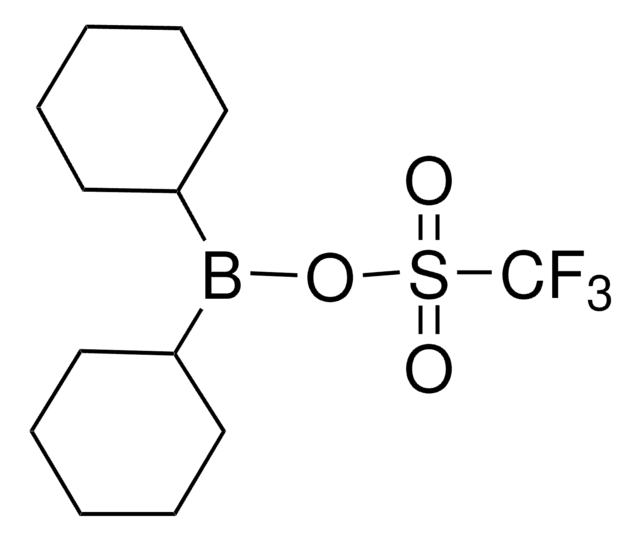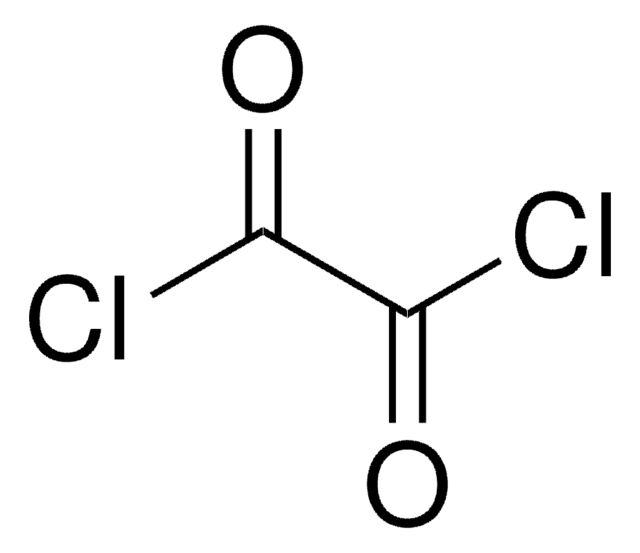261475
Dibutylboryl trifluoromethanesulfonate solution
1.0 M in methylene chloride
Synonym(s):
Dibutylboron triflate solution
About This Item
Recommended Products
form
liquid
concentration
1.0 M in methylene chloride
density
1.271 g/mL at 25 °C
SMILES string
CCCCB(CCCC)OS(=O)(=O)C(F)(F)F
InChI
1S/C9H18BF3O3S/c1-3-5-7-10(8-6-4-2)16-17(14,15)9(11,12)13/h3-8H2,1-2H3
InChI key
FAVAVMFXAKZTMV-UHFFFAOYSA-N
Looking for similar products? Visit Product Comparison Guide
General description
Application
- Stereo- and regio-selective synthesis of erythro aldols.
- As a promoter for the solution and polymer-supported trichloroacetimidate-based glycosylations.
- Synthesis of β-alkoxy carbonyl compounds via one-step Mukaiyama aldol-type reaction.
- Aldol-type cyclization for the stereoselective synthesis of cyclic ethers.
- As a reagent for the formation of boron enolates.
- As a complexation aid for the isolation of 1-acyldipyrromethanes.
- As a promoter in [1,2]-Wittig reaction between aldehydes and O-benzyl or O-allyl glycolate esters, creating two contiguous stereocenters (1,2-diol) in good yield without the need for strong base.
Signal Word
Danger
Hazard Statements
Precautionary Statements
Hazard Classifications
Carc. 2 - Eye Dam. 1 - Flam. Liq. 3 - Skin Corr. 1B - STOT SE 3
Target Organs
Central nervous system
Storage Class Code
3 - Flammable liquids
WGK
WGK 3
Flash Point(F)
80.6 °F - closed cup
Flash Point(C)
27 °C - closed cup
Personal Protective Equipment
Certificates of Analysis (COA)
Search for Certificates of Analysis (COA) by entering the products Lot/Batch Number. Lot and Batch Numbers can be found on a product’s label following the words ‘Lot’ or ‘Batch’.
Already Own This Product?
Find documentation for the products that you have recently purchased in the Document Library.
Our team of scientists has experience in all areas of research including Life Science, Material Science, Chemical Synthesis, Chromatography, Analytical and many others.
Contact Technical Service












